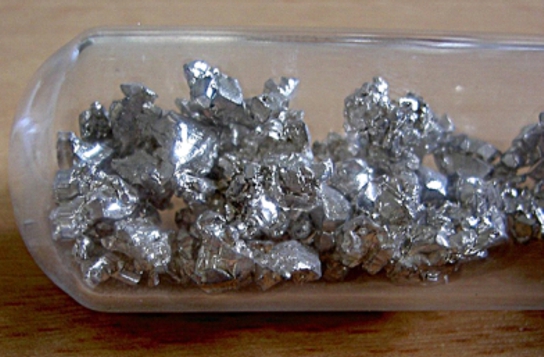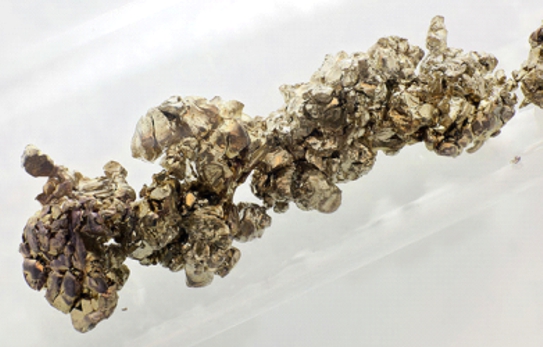Group Two – Beryllium, Magnesium, Calcium, Strontium, Barium, Radium
Group Two of the Periodic Table are alkaline earth metals. The name is historic, “earths” refers to substances that were insoluble in water and unaffected by fire, “alkali” refers to those substances, such as calcium oxide, that had similar characteristics to alkalis such as potash. By the early 1800’s it became clear that the “alkali earths” were not elements at all but metal compounds. Thus, the “metal” in the name.
They are all highly reactive and therefore not found in nature as the metal but only as their compounds.
Beryllium
Beryllium is produced through the mining of beryl (beryllium aluminium cyclosilicate – Be3Al2Si6O18) and bertrandite (beryllium sorosilicate hydroxide – Be4Si2O7(OH)2). Emerald and aquamarine are two gemstone varieties of beryl. World production in 2019 was 260t, the United States is by far the world’s largest producer, followed by China. World resources are estimated to be around 100,000t. It sells for around USD650/Kg
Beryllium is a light, hard metal that is very stiff and with a high melting point and high dimensional stability. These characteristics see it used in aerospace and defense applications. It is also used in industry, electronics and in alloys, particularly with copper. It is toxic and its exposure to workers in the industry is strictly controlled.
Emerald
Magnesium
I have written separately on magnesium, read the article here.
Calcium
Calcium is a soft white metal that reacts with air. The metal is used as a reducing agent in the preparation of some metals, it is also used as an alloying agent. However, its use as compounds vastly outweighs its use as the metal.
The main compounds are; limestone (calcium carbonate) used as a masonry stone and as one of the raw materials for cement; when limestone is heated it forms quicklime (calcium oxide), which in turn reacts with water to form slaked lime ( hydroxide calcium) which is used in cement, as a soil conditioner and in water treatment; gypsum (calcium sulphate) is used to make plaster, including plaster of Paris used to set bones.
Calcium is essential for all life; calcium phosphate is the main component of bones.
Calcium
Strontium
Most strontium is mined as celestite (SrSO4). The main use of strontium is as celestite used in drilling fluids. In 2019 64% of US strontium consumption was in drilling fluids. Strontium carbonate is the most commonly traded compound and is used as the feedstock for production of other strontium compounds.
World production in 2019 was 220,000t, mostly from China, Mexico and Spain. World resources are thought to be around 1Bt.
Strontium
Barium
Barium as the metal is little used, the vast majority is consumed as barite (barium sulphate), mostly used for drilling fluid. World mine production in 2019 was 9.5Mt, the biggest producers being China and India. World resources are estimated at 2Bt. Barite sells for around USD180/t. barium is also used as the chloride, oxide, peroxide and carbonate.
All barium compounds are toxic, however barium sulphate is insoluble and can therefore be swallowed without harm. It is sometimes used for digestive orders, often called a barium enema.
Barium
Radium
Radium was discovered by Marie and Pierre Curie in 1898. It is highly radioactive, 2.7 million times more radioactive than the same amount of natural uranium. This radioactivity excites adjacent gases, causing radioluminescence. For this reason, it was once painted on clock and watch faces so the time could be seen in the dark. With tragic consequences for the involved workers.
Radium decays to the heavy, radioactive gas radon, which also has adverse health consequences. Today, it has no commercial uses, other than occasional use to treat cancer.
Conclusion
A highly variable and important group of elements, particularly magnesium and calcium. Without which there would be no life as we know it. And calcium (burns orange), strontium (crimson) and barium (green) are very important for fireworks. The odd one out is radium, which has no effective uses at all.





